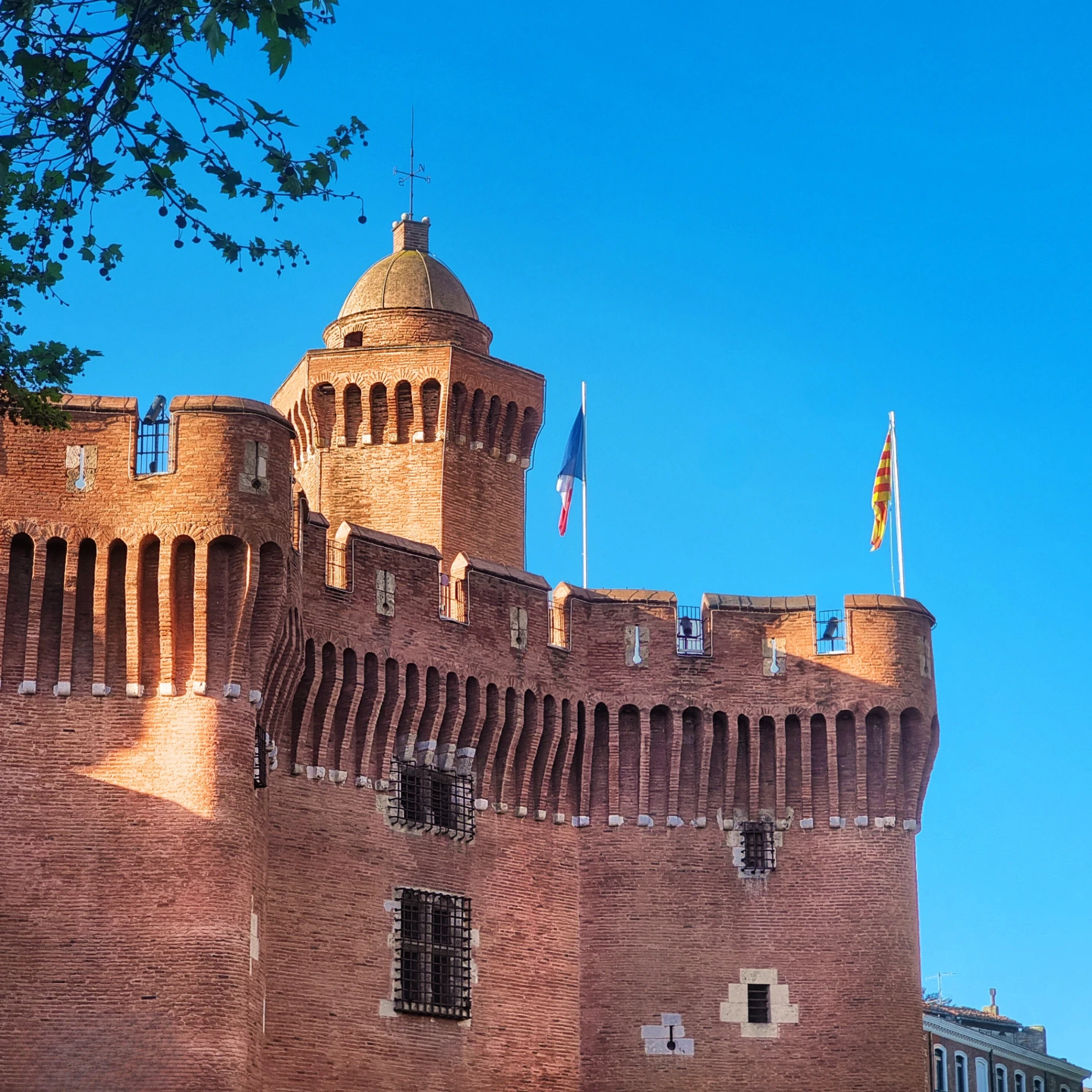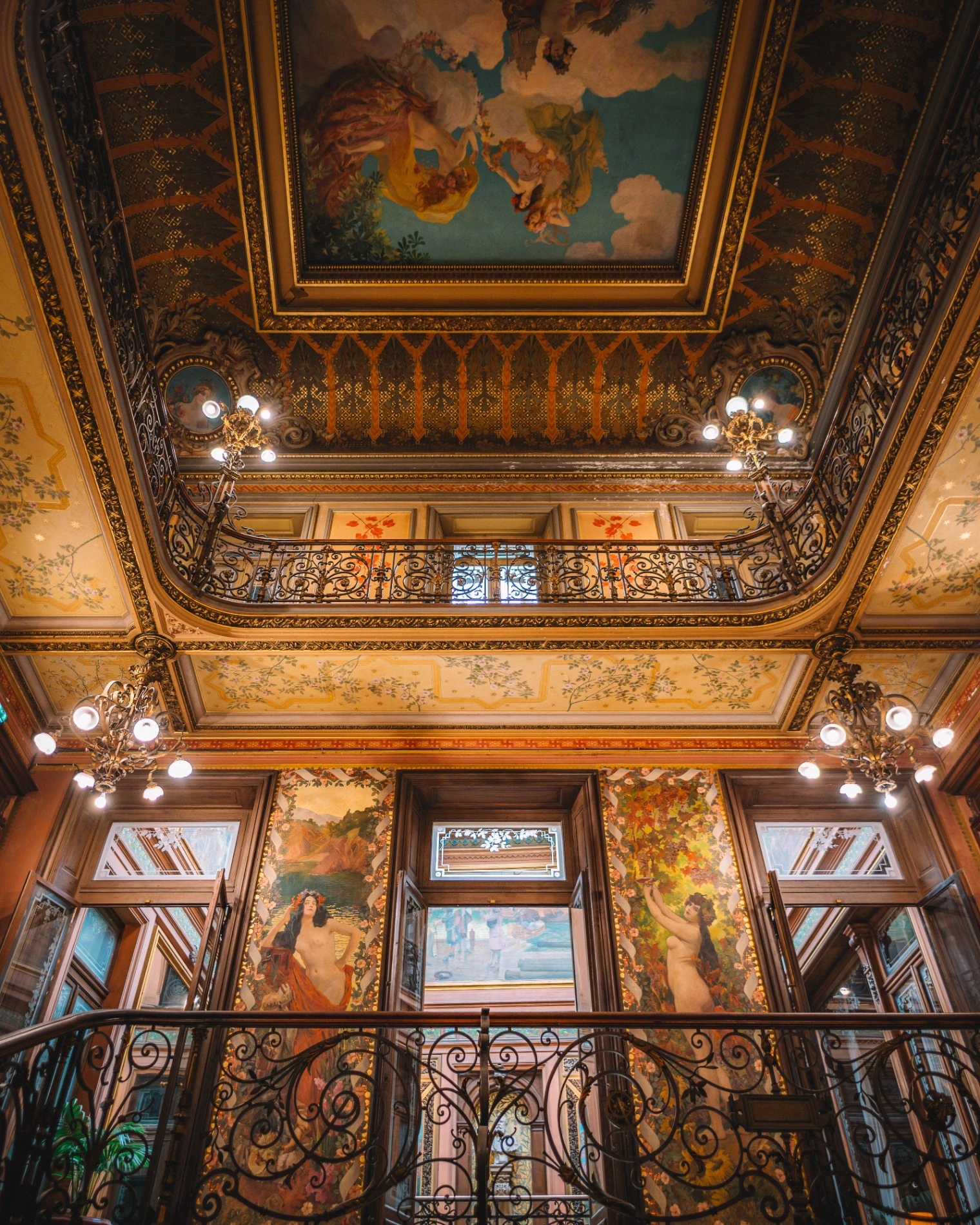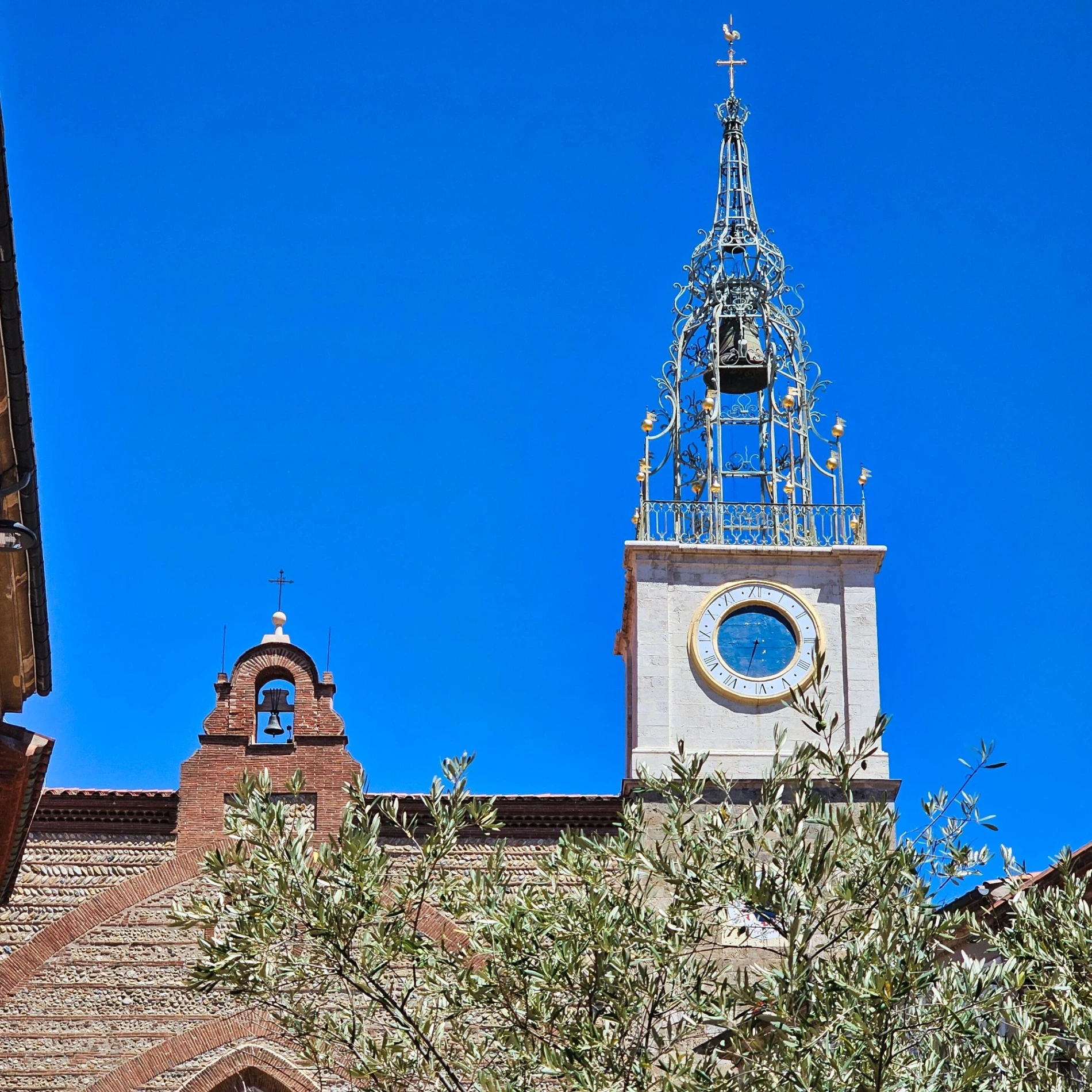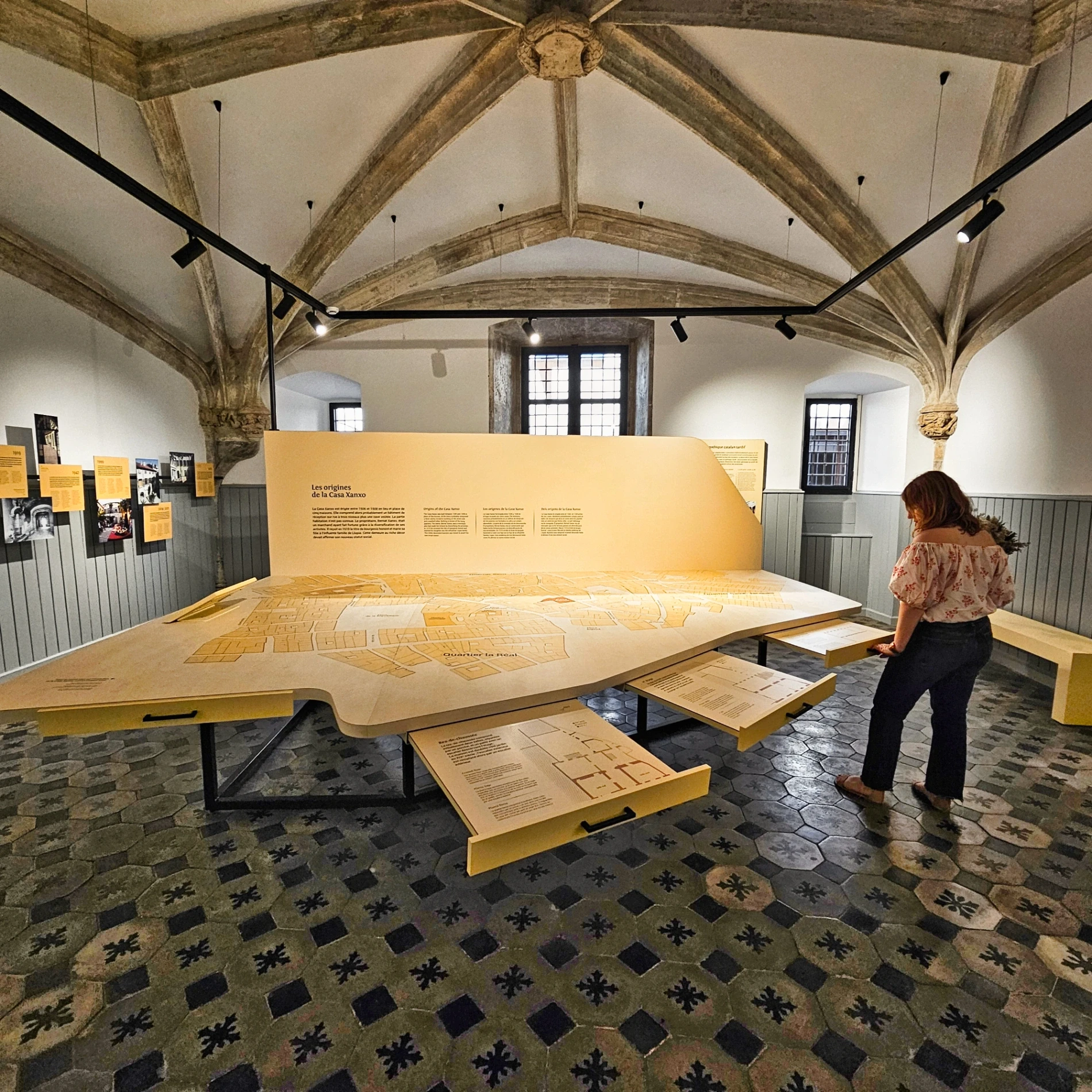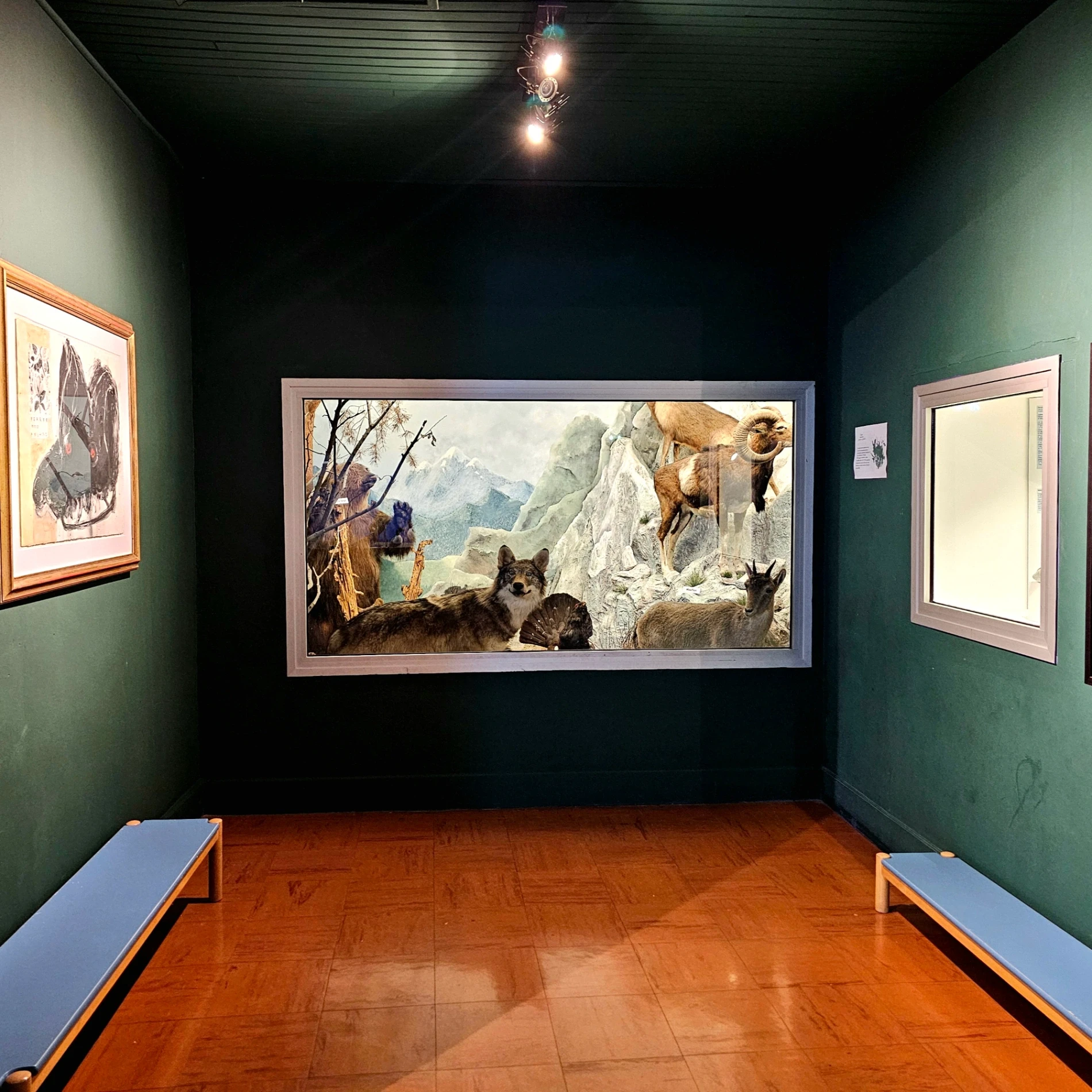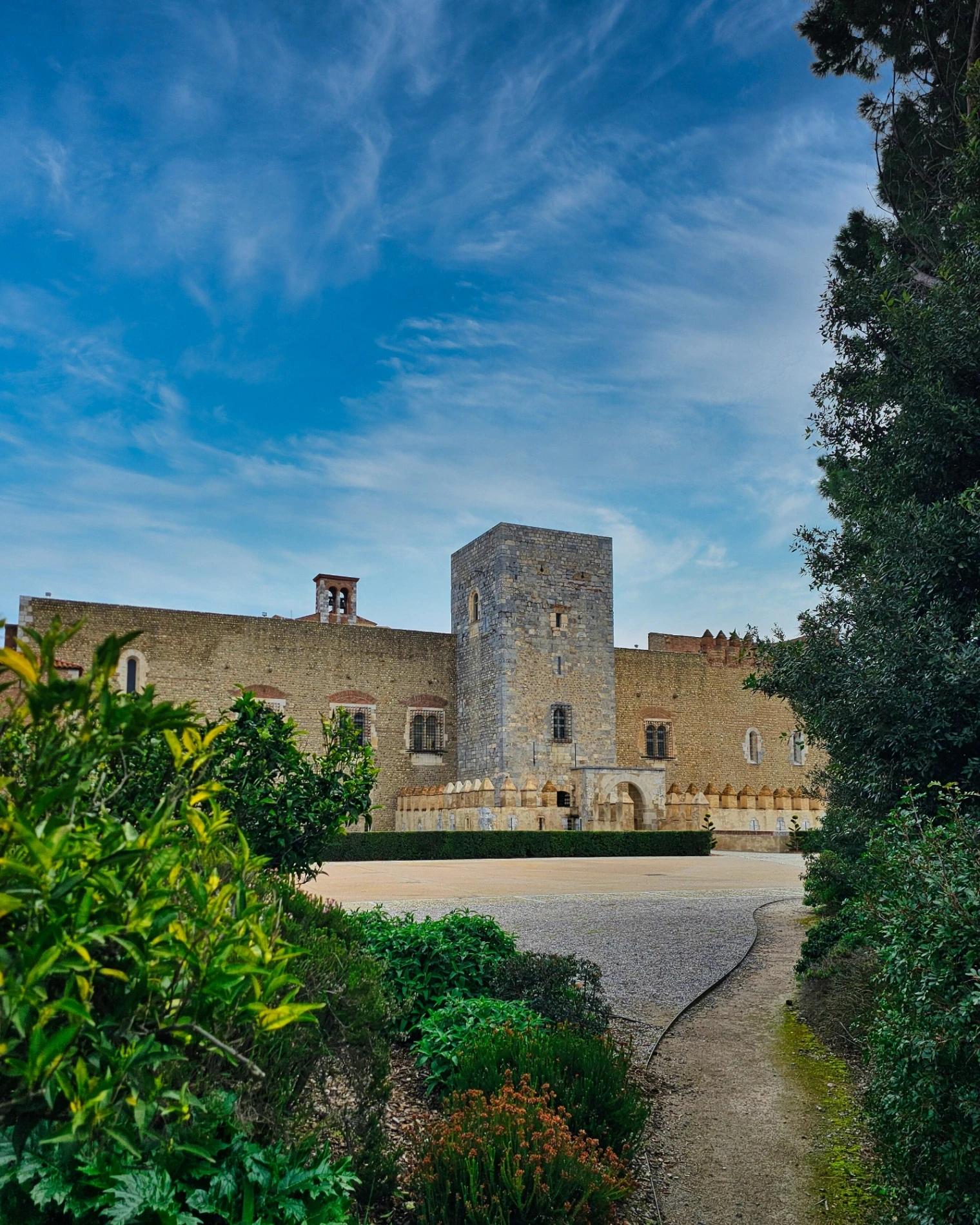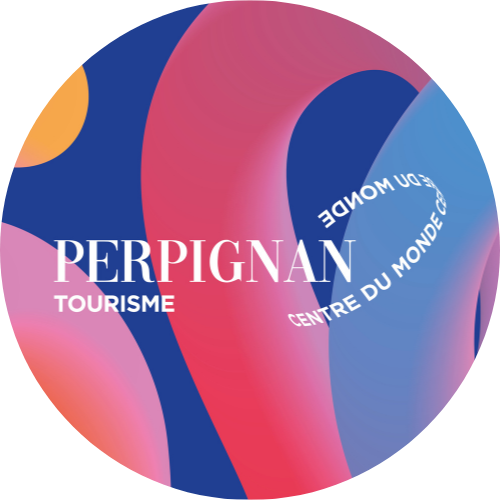Castillet and Casa Pairal museum
The main body of the building is made of brick and Baixas marble, dating back to the Aragonese period. It was built from 1368 onwards, then transformed under Louis XI, who added the current terrace and a brick turret crowned with a dome. The Notre-Dame gateway was built at the same time.
In the 17th and 18th centuries, the site was converted into a prison. Today it houses the Casa Pairal museum, which presents the history of the city and local traditions.
Inside the Castillet, a flame is kept all year round, to be taken up to the peak of Canigó to be regenerated, as tradition dictates. It is then taken down to all the villages to light the Saint-Jean bonfires.
The highlight of this monument is undoubtedly its summit, which offers a 360-degree view of the town centre and beyond.
But to get there, you have to climb 142 steps!
The Hôtel Pams, Perpignan's art nouveau jewel
This elegant town house on Émile Zola street was once the home of businessman Pierre Bardou, who set up the J.O.B cigarette paper factory here, before his daughter Jeanne and her husband Jules Pams transformed the premises into a sumptuous town house.
The sober street façade contrasts with the rest of the building. The grand staircase of onyx, marble and stucco, at the foot of which sits a sculpture by Raymond Sudre, decorated with paintings by Paul Gervais, features numerous female representations, such as Venus perched on a ship's prow on the first floor and Cybele on the ceiling.
Access to the vast tree-lined patio is via the first floor. The west wing was built in the 1930s to unify the ensemble and hide the former glass-roofed workshop dating from 1873.
The typically end-of-century and Art Nouveau decor alternates with a large number of J.O.B coats of arms, in ironwork, masonry or stained glass, reminding us of the link with the company, as well as allegories of the Côte Vermeille, where Jules Pams was born.
Hyacinthe Rigaud art museum
The museum is located in Mailly street, right in the heart of the city. It is housed in two town houses in the historic centre: the Hôtel de Lazerme and the Hôtel de Mailly.
It displays a rich collection of works, including Gothic, Baroque and Modern art.
As far as Gothic art is concerned, the Altarpiece of the Trinity is an incredible masterpiece of Catalan Gothic painting, demonstrating the dynamism of trade in Catalonia and the wealth of Perpignan turned towards the Mediterranean Sea.
For the Baroque period, Hyacinthe Rigaud was born in Perpignan on 18 July 1659, and became the portrait painter of Louis XIV and the royal family. He also painted several self-portraits, including his most famous, ‘Au Turban’, painted in 1698. This work can be admired at the Musée Hyacinthe Rigaud.
Finally, modern art is represented by works by Gustave Violet, Louis Bausil, Aristide Maillol, Raoul Dufy and Pablo Picasso, all of which have enriched the museum's collection.
Saint-Jean-Baptiste Cathedral and Campo Santo
The Roman church of Saint-Jean-le-Vieux had become too small, and the construction of a new building was initiated by Sanç de Majorque in 1324. It was built mainly of brick and pebbles, with limestone and red sandstone in places. The fall of the kingdom of Majorca in 1344, the Black Death and a lack of funds meant that work was suspended until the early 15th century.
The original three-aisle plan was abandoned: the Mallorcan architect Guillem Sagrera, who designed Palma de Mallorca cathedral, opted for a single, large Gothic nave. The work was completed in 1509, but the building did not receive the title of cathedral until 1602. The clock tower and its wrought-iron bell tower were erected between 1737 and 1743.
The statue of Saint John the Baptist surmounting the porch was created by Guy-Charles Revol in 1952. The cathedral houses a white marble baptismal font dating from the 11th century, the tomb of Bishop Louis Habert de Montmort, and neo-Gothic stained glass windows created between 1847 and 1867. The passage beneath the organ leads to the recumbent tomb of King Sancho of Majorca.
The Campo Santo is a cemetery cloister that is unique in Europe! The cloister cemetery of Saint-Jean, known as the ‘Campo Santo’ since its restoration, was built in the first third of the 14th century. The cloister galleries were covered by a wooden lean-to supported by columns with carved capitals.
At the far end of the Campo Santo, you'll find the Funeral Chapel and its stained glass windows by American artist Shirley Jaffé.
Casa Xanxo
Bernat Xanxo was one of the city's most important merchants, thanks to his prosperous trading activities. Between 1506 and 1508, he and his wife Elisabeth Xanxo built a mansion. Richly decorated, Casa Xanxo was intended to affirm their new social status.
It is located in the very heart of the city, at 8, Main de Fer street. At the time, drapers tended to live on Saint-Jacques hill; Bernat Xanxo, the son of a draper, chose to leave the district to be closer to the bishop, whom he represented.
The house included a building facing the street with a vaulted cellar for storing goods, a ground floor dedicated to trade, a reception room upstairs and an attic level occupied by the drying room. This original layout was modified over the centuries. In 1919, the building was listed as a Historic Monument.
Perpignan has held the ‘Ville d'art et d'histoire’ (VAH) label since 2001. It is awarded by the Ministry of Culture to towns that present a genuine project to enhance their heritage.
Among the commitments linked to this label, the creation of a CIAP (architecture and heritage interpretation centre) is one of the essential elements. Casa Xanxo was chosen because of its exceptional architecture and its location in the ancient heart of Perpignan.
"Perpignan Expériences" offers guided tours to help you understand the major stages in the city's history.
Natural History Museum
Housed in the Cagarriga mansion, which dates back to the 16th century, the Museum offers a permanent collection as well as temporary exhibitions throughout the year.
These collections of preserved species are the fruit of a study carried out by Perpignan's Faculty of Medicine in 1770, known as “Le cabinet des curiosités”, which resulted in the creation of the Museum in 1840 and later became the city's oldest museum.
The tour takes you on a scientific walk around the coastal ponds, the Pyrenean mountains and the Roussillon plain.
The wolf, the bear and the desman are just some of the specimens from our region on display in the showcases. Fossils, invertebrates and the impressive Egyptian mummy of the scribe from the temple of Amon-Re are waiting for you!
This exceptional piece was donated by Ibrahim Pacha in 1847, the eldest son of Mehmet Ali, Viceroy of Egypt, during his stay at the Vernet-les-Bains thermal baths.
The Kings of Majorca Palace
Located in the heart of Perpignan, this superb medieval palace was the centre of the short-lived Kingdom of Majorca for almost a century (1276-1344). It was James I, King of Aragon, who split his kingdom in two, leaving his youngest son, James II, the small kingdom of Majorca comprising the Balearic Islands, the counties of Roussillon and Cerdagne and the seigneury of Montpellier.
Wishing to have a home in his mainland capital, which had become the economic, political and cultural centre of the Mediterranean, James II had a sumptuous palace built overlooking the Roussillon plain.
This Gothic-style palace, with its central courtyard, arcades, chapels and rooms filled with magnificent tapestries, reflected the splendour of the time.
It hosted banquets, royal councils and parliaments. From the 16th century onwards, the palace was surrounded by walls built by French and Spanish engineers to transform it into a citadel. Since 1958, the palace has been the property of the Département, which is responsible for its conservation and enhancement.
Joseph Puig Museum of Coins and Medals
Joseph Puig, born on 11 December 1859 in the Réal district of Perpignan, discovered his interest in numismatics by chance when he came across a coin minted by Count Béranger IV of Barcelona on the edge of a vineyard on the road to Canet.
Although at first sight an insignificant find, it was to mark the start of a major collection, which today, more than 160 years later, enables the Puig Museum to boast the largest public collection of coins in France after Paris.
A trader by nature, Joseph Puig made his fortune in haberdashery, a fortune that he used to enrich his collection over the years.
The Catalan collector's vast collection of coins and medals can be found on the first floor of the Villa des Tilleuls, just a stone's throw from the town centre. On September 2 of 1918, Joseph Puig donated his collection and the Villa des Tilleuls to the city of Perpignan, shortly after the death of his son Paul. There is still a section dedicated to Paul.
The collection now contains more than 50,000 coins, and includes a chronology of coins from their creation in 650 BC to the present day, as well as collections classified by theme, including a section dedicated to coins from Roussillon and Catalonia.
In the permanent collection, you can discover ancient and foreign coins, the former Perpignan monetary workshop, treasures, rare coins and medals.






















